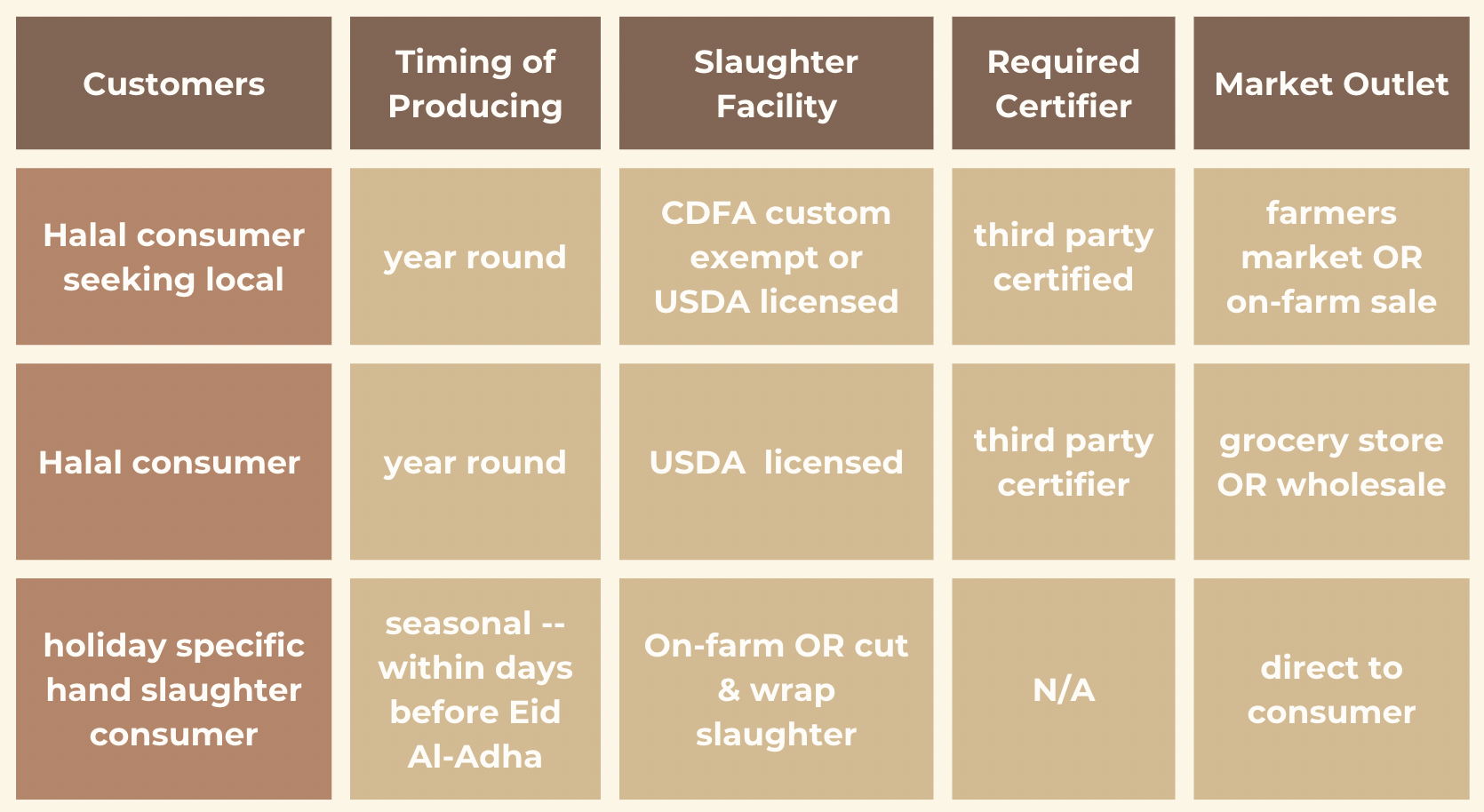Halal For Producers
What is Halal and How to Join the Market
There are approximately 750 thousand halal consumers in California. The Muslim population is one of the fastest-growing populations in the state. The current US Halal Market is approximately $13 Billion and the growth rate over the next five years is 7.42%.
What is Halal?
Halal means “lawful.” For meat to be Halal the animals must be treated as sentient, slaughtered painlessly, slaughtered by a Muslim while reciting the Basmala and Takbir prayers, & must not see other animals killed. Halal’s meat market most frequently includes beef, lamb, goat, and chicken.
What is Tayyib?
Tayyib is an Islamic ideal similar to sustainability. It is another dimension of responsible and ethical consumption. In the context of food, it considers whether something is wholesome and beneficial to the environment, society, and individual well-being.
Selecting a Certifier
Halal certifiers and the Muslim community disagree about whether Halal slaughter can include stunning. Meat can be USDA-certified without stunning, per ritual slaughter regulations, however, it would then not be humane certified. Selecting a certifier should include these considerations and be selected to best capture your needs and your desired market.
Top Halal Certifiers
- American Halal Foundation
- Halal Transactions of Omaha
- HFSAA (Halal Food Standards Alliance of America)
- IFANCA (Islamic Food & Nutrition Council of America)
- ISA Halal (Islamic Services of America)
- Do not allow animal stunning before slaughter
- ISWA (Islamic Services of Washington Area)
Holidays
Muslim holidays create additional demand for Halal products. Eid al-Adha commemorates Abraham’s sacrifice and marks the end of the Hajj, the religious pilgrimage to Mecca. The timing of this holiday is based on the Lunar calendar so they happen about 10-12 days earlier every year.
Marketing decisions
- Wholesale vs Direct-to-market
- On-farm slaughter vs Facility processing
- Holiday-based raising vs not aligned to holidays
- Live animal retailing vs meat retail only
Understanding your Halal market options
The chart below is designed to summarize basic options for direct market sales to consumers following Halal practices.

What would on-farm slaughter entail?
- Coordinate with a community representative to establish a date and time. They will then communicate with Mosque members and could bring 15-30 individuals to the farm site for purchase
- Establish the price of the animal before slaughter, considering per lb vs. whole animal and whether the price includes processing or transport.
- With on-farm slaughter it is most likely that the group will have one representative do the slaughtering for the whole group
Entering the market

Considerations
Prior to AB 888 for goat/lamb, practices of some Halal livestock producers marketed a ‘three-part product’ at one price. a) Sale of live animal b) A place to do on-farm slaughter by the purchaser c) complimentary basic processing and disposal of animal waste byproducts
Individuals wanting to purchase an animal as part of their holiday observance are unlikely to need government certification and will not plan to resell the meat. However, producers should still consider local regulations before slaughter.
Assembly Bill 888 (AB 888) expanded on-farm slaughter allowances to 25 head of goat or lamb a month. Animals cannot be sold on the farm post-slaughter. Registering with AB 888 labels the farm as a slaughter facility for possible impromptu inspection. Slaughtering without a permit/ certification is not advised.